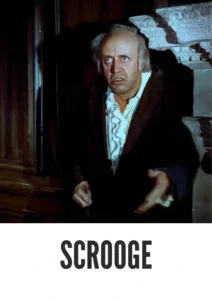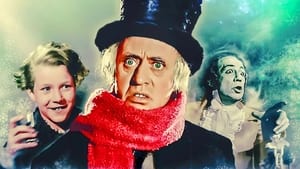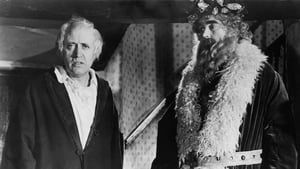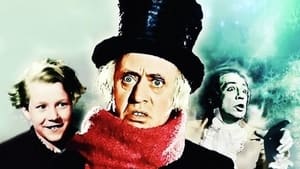Contact: info@alwanfilm.com
Video Sources 0 Views
- Watch trailer
- Scrooge 1951

Synopsis
Table of Contents
ToggleReview: Scrooge 1951 Colorized – A Timeless Holiday Classic in Glorious Technicolor

Introduction
“Scrooge” (1951) stands as a beloved holiday classic that continues to warm the hearts of audiences with its timeless tale of redemption and the true spirit of Christmas. In this review, we’ll explore the significance of this Technicolor masterpiece, its impact on generations of viewers, and its enduring legacy in the realm of festive cinema.
Check The Full Colorized Movies List
Check Our Colorized Movies Trailer Channel
Understanding Scrooge 1951 Colorized: Director, Cast, and Genre
Directed by Brian Desmond Hurst, “Scrooge” (1951) showcases his keen ability to bring Charles Dickens’ iconic story to life on the silver screen. The film features an ensemble cast led by the incomparable Alastair Sim, whose portrayal of Ebenezer Scrooge is widely regarded as one of the finest in cinematic history. With its blend of drama, fantasy, and holiday cheer, “Scrooge” (1951) captures the essence of Dickens’ timeless tale and delights audiences of all ages.
Exploring the World of Scrooge 1951 Colorized: Plot and Characters
At its heart, “Scrooge” (1951) follows the journey of Ebenezer Scrooge, a miserly old man who is visited by three spirits on Christmas Eve and given the chance to redeem himself before it’s too late. As Scrooge confronts the ghosts of his past, present, and future, he undergoes a profound transformation that teaches him the true meaning of compassion, generosity, and the joy of giving. Along the way, he encounters a cast of memorable characters, from the jovial Bob Cratchit to the ethereal Ghost of Christmas Yet to Come, each playing a pivotal role in Scrooge’s redemption.
The Art of Film Colorization
“Scrooge” (1951) was one of the early Technicolor productions, showcasing the vibrant hues and lush cinematography that would become synonymous with the holiday classic. Through the use of Technicolor technology, the filmmakers were able to bring Dickens’ Victorian London to life in stunning detail, immersing viewers in a world of snowy streets, bustling markets, and festive cheer. The result is a visual feast for the eyes that continues to enchant audiences with its timeless beauty and charm.
Early Technicolor Films: A Brief History
The history of Technicolor filmmaking traces its roots back to the early 20th century, with the development of groundbreaking color processes that revolutionized the world of cinema. From the vibrant musicals of the 1930s to the epic adventures of the 1950s, Technicolor technology transformed the way filmmakers told stories, allowing them to capture the imagination of audiences with vivid colors and breathtaking imagery. “Scrooge” (1951) stands as a shining example of the power of Technicolor to enhance the visual storytelling experience and bring classic tales to life in glorious color.
Scrooge 1951 and Its Technicolor Splendor
The decision to film “Scrooge” (1951) in Technicolor was a bold and inspired choice that paid off in spades, elevating the film to new heights of visual splendor and cinematic excellence. From its lavish production design to its sumptuous costumes, every frame of “Scrooge” (1951) is a testament to the magic of Technicolor filmmaking, transporting audiences to a bygone era of yuletide merriment and holiday cheer. Through the use of Technicolor technology, the filmmakers were able to imbue Dickens’ timeless tale with a sense of warmth, wonder, and festive magic that continues to captivate audiences to this day.
The Debate Over Film Colorization
While the use of Technicolor in “Scrooge” (1951) has been universally praised for its stunning visual effects and artistic merit, the debate over film colorization continues to rage on. Proponents argue that colorization breathes new life into classic movies and enhances the viewing experience for modern audiences, while detractors maintain that it compromises the artistic integrity of the original work and detracts from its historical significance. As the debate rages on, “Scrooge” (1951) stands as a shining example of the power of color to enhance the visual storytelling experience and bring classic tales to life in vibrant Technicolor splendor.
Examining Scrooge 1951 as a Technicolor Masterpiece
As with any Technicolor classic, the impact of colorization on “Scrooge” (1951) is a matter of personal interpretation. Some may argue that it enhances the film’s visual appeal and immerses viewers in its world, while others may feel that it detracts from the stark beauty of the original black and white version. Regardless of one’s stance on the issue, there’s no denying the enduring power of “Scrooge” (1951) as a timeless holiday classic that continues to captivate audiences with its heartfelt story, memorable characters, and breathtaking Technicolor imagery.
Influence and Legacy: Scrooge 1951 Colorized’s Impact on Holiday Cinema
“Scrooge” (1951) has left an indelible mark on the world of holiday cinema, inspiring generations of filmmakers and enchanting audiences with its timeless tale of redemption and the true spirit of Christmas. From its heartwarming performances to its stunning Technicolor cinematography, the film continues to resonate with viewers of all ages, reaffirming its status as a beloved classic of the holiday genre.
Director’s Cinematic Legacy: Beyond Scrooge 1951 Colorized
Brian Desmond Hurst’s influence extends far beyond “Scrooge” (1951), with a diverse body of work that spans multiple genres and decades. From his early days as an assistant director to his later successes as a filmmaker in his own right, Hurst’s contributions to the world of cinema are celebrated for their craftsmanship, creativity, and enduring appeal. Through his groundbreaking work on “Scrooge” (1951) and other classic films, Hurst has left an indelible imprint on the world of cinema, inspiring generations of filmmakers to follow in his footsteps and continue his legacy of storytelling excellence.
Themes Explored in Scrooge 1951 Colorized
“Scrooge” (1951) explores a myriad of themes, from the transformative power of redemption to the importance of kindness, compassion, and the true spirit of Christmas. Through its richly drawn characters and poignant storytelling, the film invites viewers to reflect on the true meaning of the holiday season and the profound impact that acts of generosity and goodwill can have on the human heart. As audiences immerse themselves in the world of “Scrooge” (1951), they are reminded of the universal truths that bind us together as human beings and the enduring power of love to overcome even the greatest of obstacles.
Reception and Controversy Surrounding Scrooge 1951 Colorized
Upon its release, “Scrooge” (1951) received widespread critical acclaim, with many praising its heartfelt performances, stunning Technicolor cinematography, and timeless storytelling. However, the decision to release the film in color sparked debate among purists, reigniting the age-old discussion surrounding film preservation and artistic integrity. Despite the controversy, “Scrooge” (1951) remains a beloved holiday classic that continues to enchant audiences with its timeless tale of redemption and the true spirit of Christmas.
Where to Watch Scrooge 1951 Colorized Online
For those eager to experience the timeless magic of “Scrooge” (1951), the film is readily available on popular streaming platforms such as Netflix, Amazon Prime, and Hulu. Whether you choose to watch it in its original black and white format or the stunning Technicolor version, “Scrooge” (1951) promises to transport you to a world of holiday cheer and festive magic, where the true spirit of Christmas shines brightest in the hearts of all who believe.
FAQs About Scrooge 1951 Colorized
Q: Is “Scrooge” (1951) based on a true story? A: No, “Scrooge” (1951) is a fictional tale inspired by Charles Dickens’ classic novella, “A Christmas Carol.”
Q: Who are the main actors in “Scrooge” (1951)? A: “Scrooge” (1951) features an ensemble cast led by the incomparable Alastair Sim in the title role, alongside a talented roster of performers who bring Dickens’ iconic characters to life with warmth, humor, and humanity.
Q: What awards did “Scrooge” (1951) win? A: While “Scrooge” (1951) did not win any major awards, it remains a beloved holiday classic that continues to captivate audiences with its timeless tale of redemption and the true spirit of Christmas.
Q: Why was “Scrooge” (1951) released in Technicolor? A: The decision to film “Scrooge” (1951) in Technicolor was made to enhance the visual appeal of the film and capture the festive atmosphere of Dickens’ Victorian London in stunning detail. Through the use of Technicolor technology, the filmmakers were able to imbue “Scrooge” (1951) with a sense of warmth, wonder, and holiday cheer that continues to enchant audiences to this day.
Conclusion
“Scrooge” (1951) remains a timeless holiday classic that continues to enchant audiences with its heartfelt story, memorable characters, and breathtaking Technicolor imagery. Whether viewed in its original black and white format or the stunning Technicolor version, “Scrooge” (1951) promises to transport you to a world of holiday cheer and festive magic, where the true spirit of Christmas shines brightest in the hearts of all who believe.














